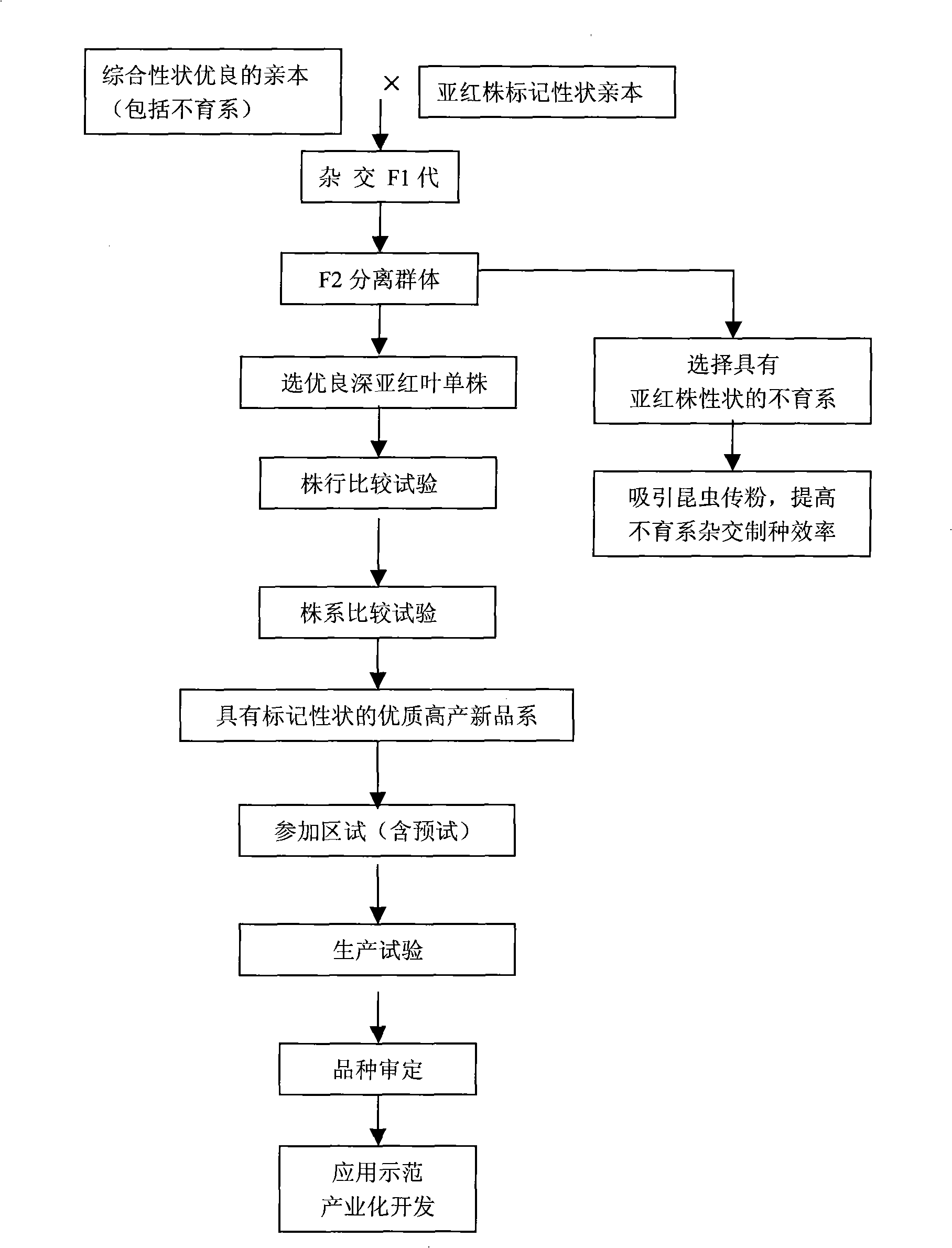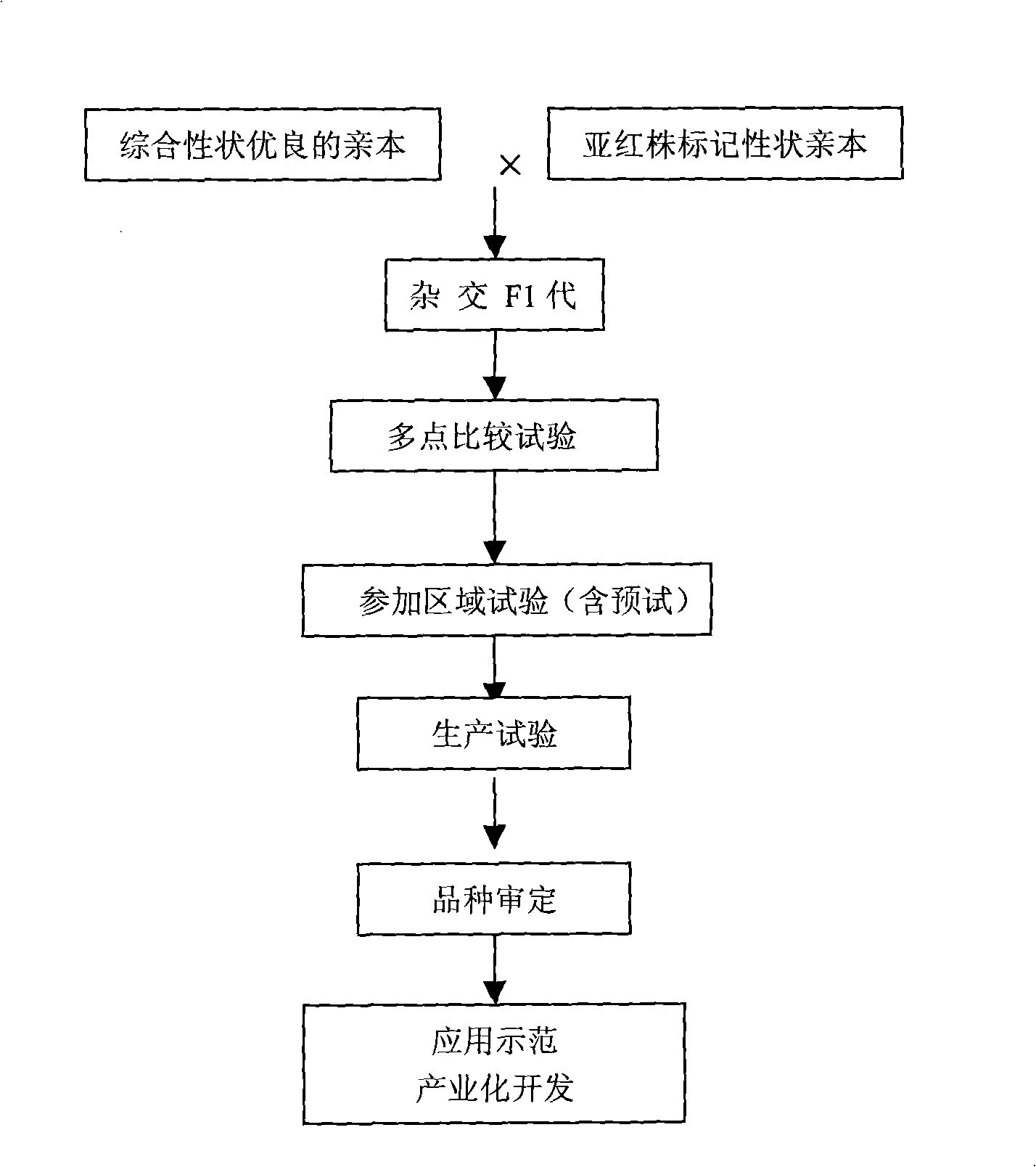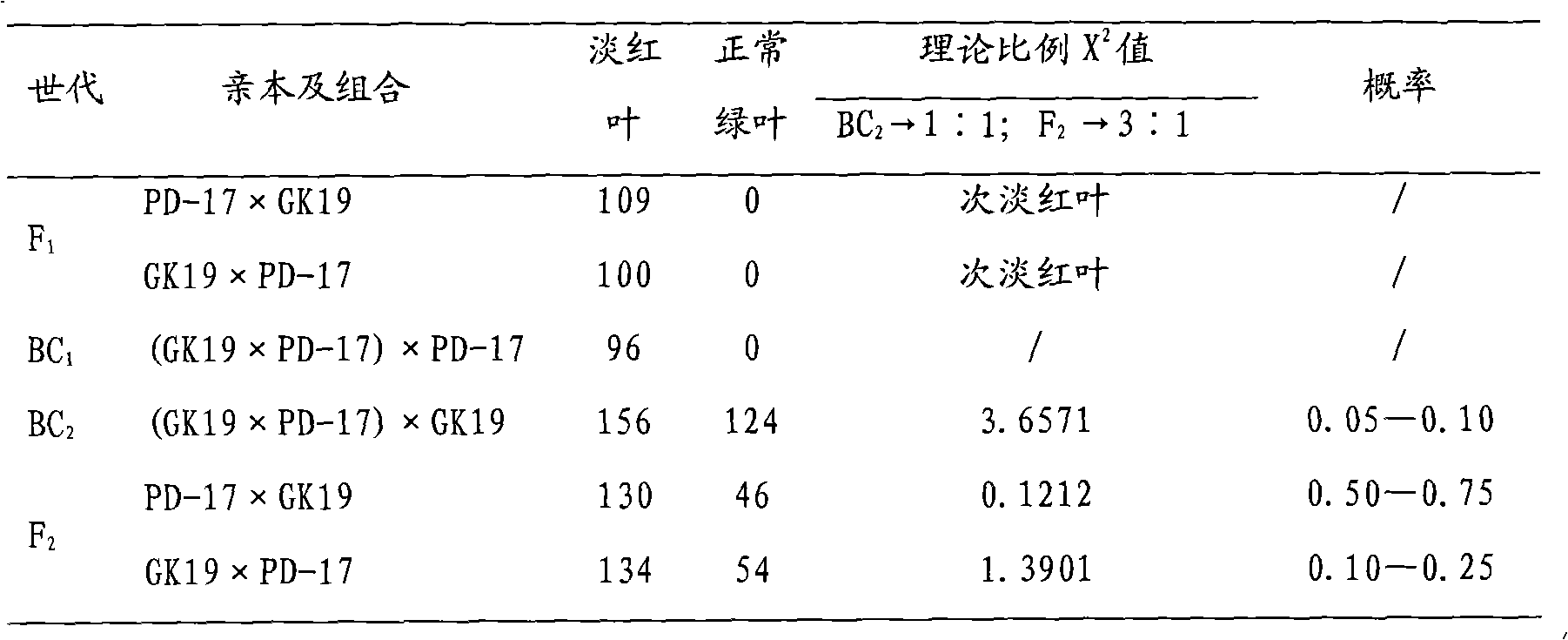Cotton breeding method using sub-red plant mutant from upland cotton
A red plant mutation and upland cotton technology, applied in the fields of application, botany equipment and methods, angiosperms/flowering plants, etc., can solve the problems of low net photosynthetic rate, breeding application limitations, disadvantages of leaf photosynthesis, etc., to improve cotton yield effect
- Summary
- Abstract
- Description
- Claims
- Application Information
AI Technical Summary
Problems solved by technology
Method used
Image
Examples
Embodiment 1
[0052] This embodiment is based on the following two considerations, and is aimed at applying cotton breeding with the mutation of the cotton upland cotton strain and finally realizing industrialization.
[0053] 1. Taking the mutation of the sub-red strain as the marker trait of the variety
[0054] Because the mutant traits of the sub-red strain are incompletely dominant quality traits, if the germplasm with the mutant traits of the sub-red strain is used as a parent to cross with a large-scale popularized variety or a high-quality germplasm resource with specific traits, F1 is incompletely dominant . The segregation ratio of 1 (sub-red leaves) : 2 (light sub-red leaves) : 1 (green leaves) appeared in F2 segregation. Select excellent sub-red leaf single plants in the segregation population, test species, plant row test, and strain comparison test to obtain a line with excellent comprehensive properties and sub-red leaf marker traits, which can be used as a variety promotion...
Embodiment 2
[0070] The cotton breeding method that the present embodiment applies the mutation of upland cotton sub-red strain is slightly different from the process of the above-mentioned embodiment, as figure 2 As shown, the specific steps are as follows:
[0071] 1. In the first year, the F1 generation was obtained by crossing the upland cotton parents E046, JK19, E069, YK1107, W98 with excellent comprehensive traits and sub-red leaf marker lines E083, E084, E078;
[0072] 2. In the second year, carry out a multi-point comparative test on the hybrid F1 combination, and select the combination with excellent comprehensive properties;
[0073] 3. In the third year, dominant hybrid combinations with marker traits will participate in the regional test;
[0074] 4. Pass the regional test for the next 2-3 years, and the production test for another 1-2 years, and approve the recommended varieties;
PUM
 Login to View More
Login to View More Abstract
Description
Claims
Application Information
 Login to View More
Login to View More - R&D
- Intellectual Property
- Life Sciences
- Materials
- Tech Scout
- Unparalleled Data Quality
- Higher Quality Content
- 60% Fewer Hallucinations
Browse by: Latest US Patents, China's latest patents, Technical Efficacy Thesaurus, Application Domain, Technology Topic, Popular Technical Reports.
© 2025 PatSnap. All rights reserved.Legal|Privacy policy|Modern Slavery Act Transparency Statement|Sitemap|About US| Contact US: help@patsnap.com



